|
|
|
Книги издательства «Oxford University Press»
|
In religious terms Pentecostalism was probably the most vibrant and rapidly-growing religious movement of the 20th century. Starting as a revivalistic and renewal movement within Christianity, it encircled the globe in less than 25 years and grew in North America and then in those parts of the world with the highest birth-rates. Characterised by speaking in tongues, miracles, television evangelism and megachurches, it is also noted for its small-group meetings, empowerment of individuals, liberation of women and humanitarian concerns. Without the financial and military support of the state (as was the case with communism), it flourished in almost every conceivable socio-political environment. Even in Europe, where religion most frequently appeared tired and out of date, Pentecostalism might draw large crowds or, within mainline Christian congregations, flourish in a more muted charismatic form. When these two forms are added together, Pentecostalism and neo-Pentecostalism are thought to account for around 450 million people. William K Kay outlines the origins and growth of Pentecostalism, looking at not only the theological aspects of the movement, but also the sociological influences of its political and humanitarian viewpoints. |
|
Malise Ruthven tackles the polemic and stereotypes surrounding this complex phenomenon — one that eludes sim today, a conclusion impossible to ignore since the events in New York on September 11 2001. But what does 'fundamentalism' really mean? Since it was coined by American Protestant evangelicals in the 1920s, the use of the term 'fundamentalist' has expanded to include a diverse range of radical conservatives and ideological purists, not all religious. Fundamentalism could now mean both militant Israeli settlers as well as the Islamist radicals who oppose them, it can mean Christians, Hindus, animal liberationists, and even Buddhist nationalists. Ruthven investigates fundamentalism's historical, social, religious, political, and ideological roots, and tackles the polemic and stereotypes surrounding this complex phenomenon — one that eludes simple definition, yet urgently needs to be understood. ABOUT THE SERIES: The Very Short Introductions series from Oxford University Press contains hundreds of titles in almost every subject area. These pocket-sized books are the perfect way to get ahead in a new subject quickly. Our expert authors combine facts, analysis, perspective, new ideas, and enthusiasm to make interesting and challenging topics highly readable. |
|
Mormonism is frequently described as the most successful indigenous American religion. Mormon beliefs arouse curiosity because they depart from normal Christian doctrine, leading to the question: Are Mormons Christian? This introduction will include the history of the contemporary Mormonism, and an analysis and emphasis of Mormon beliefs, beginning with Joseph Smith, the founding prophet. ABOUT THE SERIES: The Very Short Introductions series from Oxford University Press contains hundreds of titles in almost every subject area. These pocket-sized books are the perfect way to get ahead in a new subject quickly. Our expert authors combine facts, analysis, perspective, new ideas, and enthusiasm to make interesting and challenging topics highly readable. |
|
Children's literature takes many forms — works adapted for children in antiquity, picture books and pop-ups — and now includes the latest online games and eBooks. This vast and amorphous subject is both intimately related to other areas of literary and cultural investigation but also has its own set of concerns, issues and challenges. From familiar authors including Beatrix Potter and Roald Dahl, classic books such as Pooh, Alice in Wonderland, and The Secret Garden, to modern works including Harry Potter and the Twilight series, thisVery Short Introduction provides an overview of the history of children's literature as it has developed in English, whilst at the same time introducing key debates, developments, and figures in the field. Raising questions about what shape the future of literature for children should take, and exploring the crossover with adult fiction, Reynolds shows that writing for children — whether on page or screen — has participated in shaping and directing ideas about culture, society and childhood. |
|
From popular histories through to reworkings of classical subject matter by contemporary poets, dramatists, and novelists, the classical world and the masterpieces of its literature continue to fascinate readers and audiences in a huge variety of media. In this Very Short Introduction, William Allan explores what the 'classics' are and why they continue to shape our Western concepts of literature. Presenting a range of material from both Greek and Latin literature, he illustrates the variety and sophistication of these works, and considers examples from all the major genres. Ideal for the general reader interested in works of classic literature, as well as students at A-Level and University, this is a lively and lucid guide to the major authors and literary forms of the ancient period. ABOUT THE SERIES: The Very Short Introductions series from Oxford University Press contains hundreds of titles in almost every subject area. These pocket-sized books are the perfect way to get ahead in a new subject quickly. Our expert authors combine facts, analysis, perspective, new ideas, and enthusiasm to make interesting and challenging topics highly readable. |
|
Contemporary fiction is a wide and diverse field, now global in dimension, with an enormous range of novels and writers that continues to grow at a fantastic speed. In this Very Short Introduction, Robert Eaglestone provides a clear and engaging exploration of the major themes, patterns, and debates of contemporary fiction. From genre, form, and experimentalism to the legacies of modernism and postmodernism, the relationship between globalization and terrorism, and the impact of technology, Eaglestone examines how works both reflect the world in which we live and the artistic concerns of writers and readers alike. |
|
«Documentary film can encompass anything from Robert Flaherty's pioneering ethnography Nanook of the North to Michael Moore's anti-Iraq War polemic Fahrenheit 9/11, from Dziga Vertov's artful Soviet propaganda piece Man with a Movie Camera to Luc Jacquet's heart-tugging wildlife epic March of the Penguins. In this concise, crisply written guide, Patricia Aufderheide takes readers along the diverse paths of documentary history and charts the lively, often fierce debates among filmmakers and scholars about the best ways to represent reality and to tell the truths worth telling. Beginning with an overview of the central issues of documentary filmmaking-its definitions and purposes, its forms and founders-Aufderheide focuses on several of its key subgenres, including public affairs films, government propaganda (particularly the works produced during World War II), historical documentaries, and nature films. Her thematic approach allows readers to enter the subject matter through the kinds of films that first attracted them to documentaries, and it permits her to make connections between eras, as well as revealing the ongoing nature of documentary's core controversies involving objectivity, advocacy, and bias. Interwoven throughout are discussions of the ethical and practical considerations that arise with every aspect of documentary production. A particularly useful feature of the book is an appended list of «100 great documentaries» that anyone with a serious interest in the genre should see. Drawing on the author's four decades of experience as a film scholar and critic, this book is the perfect introduction not just for teachers and students but also for all thoughtful filmgoers and for those who aspire to make documentaries themselves. ABOUT THE SERIES: The Very Short Introductions series from Oxford University Press contains hundreds of titles in almost every subject area. These pocket-sized books are the perfect way to get ahead in a new subject quickly. Our expert authors combine facts, analysis, perspective, new ideas, and enthusiasm to make interesting and challenging topics highly readable.» |

|
The music of the medieval, Renaissance, and baroque periods have been repeatedly discarded and rediscovered ever since they were new. An interest in music of the past has been characteristic of a part of the musical world since the early 19th century. The revival of Gregorian chant in the early 19th century; the Cecilian movement in later 19th-century Germany seeking to immortalize Palestrina's music as a sound-ideal; Mendelssohn's revival of Bach: these are some of the efforts made in the past to restore still earlier music. In recent years this interest has taken on particular meaning, representing two specific trends: first, a rediscovery of little-known underappreciated repertories, and second, an effort to recover lost performing styles, with the conviction that such music will come to life anew with the right performance. Much has been gained in the 20th century from the study and revival of instruments, playing techniques, and repertories. In this VSI, Thomas Forrest Kelly frames chapters on the forms, techniques, and repertories practices of the medieval, Renaissance, and baroque periods with discussion of why old music has been and should be revived, as well as a short history of early music revivals. |
|
Sweeping across two millennia and every literary genre, acclaimed scholar and biographer Jonathan Bate provides a dazzling introduction to English Literature. The focus is wide, shifting from the birth of the novel and the brilliance of English comedy to the deep Englishness of landscape poetry and the ethnic diversity of Britain's Nobel literature laureates. It goes on to provide a more in-depth analysis, with close readings from an extraordinary scene in King Lear to a war poem by Carol Ann Duffy, and a series of striking examples of how literary texts change as they are transmitted from writer to reader. The narrative embraces not only the major literary movements such as Romanticism and Modernism, together with the most influential authors including Chaucer, Donne, Johnson, Wordsworth, Austen, Dickens and Woolf, but also little-known stories such as the identity of the first English woman poet to be honoured with a collected edition of her works. Written with the flair and passion for which Jonathan Bate has become renowned, this book is the perfect Very Short Introduction for all readers and students of the incomparable literary heritage of these islands. |
|
Ethnomusicologists believe that all humans, not just those we call musicians, are musical, and that musicality is one of the essential touchstones of the human experience. This insight raises big questions about the nature of music and the nature of humankind, and ethnomusicologists argue that to properly address these questions, we must study music in all its geographical and historical diversity. In this Very Short Introduction, one of the foremost ethnomusicologists, Timothy Rice, offers a compact and illuminating account of this growing discipline, showing how modern researchers go about studying music from around the world, looking for insights into both music and humanity. The reader discovers that ethnomusicologists today not only examine traditional forms of music-such as Japanese gagaku, Bulgarian folk music, Javanese gamelan, or Native American drumming and singing-but also explore more contemporary musical forms, from rap and reggae to Tex-Mex, Serbian turbofolk, and even the piped-in music at the Mall of America. To investigate these diverse musical forms, Rice shows, ethnomusicologists typically live in a community, participate in and observe and record musical events, interview the musicians, their patrons, and the audience, and learn to sing, play, and dance. It's important to establish rapport with musicians and community members, and obtain the permission of those they will work with closely over the course of many months and years. We see how the researcher analyzes the data to understand how a particular musical tradition works, what is distinctive about it, and how it bears the personal, social, and cultural meanings attributed to it. Rice also discusses how researchers may apply theories from anthropology and other social sciences, to shed further light on the nature of music as a human behavior and cultural practice. About the Series: Oxford's Very Short Introductions series offers concise and original introductions to a wide range of subjects-from Islam to Sociology, Politics to Classics, Literary Theory to History, and Archaeology to the Bible. Not simply a textbook of definitions, each volume in this series provides trenchant and provocative-yet always balanced and complete-discussions of the central issues in a given discipline or field. Every Very Short Introduction gives a readable evolution of the subject in question, demonstrating how the subject has developed and how it has influenced society. Eventually, the series will encompass every major academic discipline, offering all students an accessible and abundant reference library. Whatever the area of study that one deems important or appealing, whatever the topic that fascinates the general reader, the Very Short Introductions series has a handy and affordable guide that will likely prove indispensable. |
|
This stimulating Very Short Introduction throws open the doors on a remarkably diverse musical genre, with a world-wide reach that goes far beyond America's shores to discuss folk music of every possible kind and in every corner of the globe. Written by award-winning ethnomusicologist Mark Slobin this is the first compact introduction to folk music that offers a truly global perspective. Slobin offers an extraordinarily generous portrait of folk music, one that embraces a Russian wedding near the Arctic Circle, a group song in a small rainforest village in Brazil, and an Uzbek dance tune in Afghanistan. He looks in detail at three poignant songs from three widely separated regions-northern Afghanistan, Jewish Eastern Europe, and the Anglo-American world-with musical notation and lyrics included. He goes on to sketch out the turbulent times of folk music today and tomorrow, confronting new possibilities, frameworks, and challenges. ABOUT THE SERIES: The Very Short Introductions series from Oxford University Press contains hundreds of titles in almost every subject area. These pocket-sized books are the perfect way to get ahead in a new subject quickly. Our expert authors combine facts, analysis, perspective, new ideas, and enthusiasm to make interesting and challenging topics highly readable. |
|
Science Fiction has proved notoriously difficult to define. It has been explained as a combination of romance, science and prophecy; as a genre based on an imagined alternative to the reader's environment; and as a form of fantastic fiction and historical literature. It has also been argued that science fiction narratives are the most engaged, socially relevant, and responsive to the modern technological environment. This Very Short Introduction doesn't offer a history of science fiction, but instead ties examples of science fiction to different historical moments, in order to demonstrate how science fiction has evolved over time. David Seed looks not only at literature, but also at drama and poetry, as well as film. Examining recurrent themes in science fiction he looks at voyages into space, the concept of the alien and alternative social identities, the role of technology in science fiction, and its relation to time — in the past, present, and future. |
|
Spanish literature has given the world the figures of Don Quixote and Don Juan, and is responsible for the 'invention' of the novel in the 16th century. The medieval period produced literature in Castilian, Catalan, Galician, Latin, Arabic, and Hebrew, and today there is a flourishing literature in Catalan, Galician, and Basque as well as in Castilian-the language that has became known as Spanish. A multilayered history of exile has produced a transnational literary production, while writers in Spain have engaged with European cultural trends. This Very Short Introduction explores this rich literary history, which resonates with contemporary debates on transnationalism and cultural diversity. The book introduces a general readership to the ways in which Spanish literature has been read, in and outside Spain, explaining misconceptions, outlining the insights of recent scholarship and suggesting new readings. It highlights the precocious modernity of much early modern Spanish literature, and shows how the gap between modern ideas and social reality stimulated creative literary responses in subsequent periods; as well as how contemporary writers have adjusted to Spain's recent accelerated modernization. |
|
If you read the 'business pages' of a newspaper or if you listen to the financial news on the television or radio, you will often hear terms such as liability, balance sheet or earnings. These terms turn up in non-financial contexts as well: he was more of a liability than an asset. If you invest in shares, have a building society account, or sit on a committee of the property company which owns your apartment block, you will receive financial statements every year. If you are a manager in a company, a hospital or a school, you will see accounting information often. This Very Short Introduction provides a guide to understanding and using accounting information. Christopher Nobes explains the main areas of accounting work, from bookkeeping and financial reporting to auditing and management accounting. ABOUT THE SERIES: The Very Short Introductions series from Oxford University Press contains hundreds of titles in almost every subject area. These pocket-sized books are the perfect way to get ahead in a new subject quickly. Our expert authors combine facts, analysis, perspective, new ideas, and enthusiasm to make interesting and challenging topics highly readable. |

|
There has been an explosion of interest in entrepreneurs in the popular media, as well as in business, policy, and education. But what do entrepreneurs do? What is entrepreneurship and why is it important? What is distinctive about entrepreneurs? And where do they come from? In this Very Short Introduction Paul Westhead and Mike Wright weave a pathway through the debates about entrepreneurship, providing a guide to the entrepreneurial process. They look at how the actions of entrepreneurs are shaped by the external environment and availability of resources, consider the types of organizations in which entrepreneurs can be found, and look at the diversity in their backgrounds, experience, and how they think and learn. Lastly, they consider the impact that entrepreneurs have on modern market economies and look at the future of entrepreneurship in our increasingly globalized world. |
|
John Hendry, a leading management scholar, looks at the nature and practice of Management in this Very Short Introduction. Tracing the development of management over the last century, he looks not only at what managers do, but also provides an insight to modern management theory. He considers the influences of national and organizational culture, the relationship between power and domination, managing in different cultures, approaches to management, and at the accountability of managers and morality. This is an ideal introduction for anyone interested in, or studying, business and management. |
|
If environmental protection is costly, how much should we spend on pollution control? Is it worth reducing pollution to zero, or should we accept some level of pollution because of the economic benefits associated with it? How can we assess the benefits that people get from a less-polluted atmosphere? In broad terms, environmental economics looks at how economic activity and policy affect the environment in which we live. Some production generates pollution, such as power station emissions causing acid rain and contributing to global warming, but household consumption decisions also affect the environment, where more consumption can mean more waste sent to polluting incinerators. However, pollution is not an inevitable consequence of economic activity — environmental policies can require polluting firms to clean up their emissions, and can encourage people to change their behaviour, through environmental taxes on polluting goods, for example. Generally, though, these measures will involve some costs, such as installing pollution control equipment. So there's a trade-off: a cleaner environment, but economic costs. In recent years, many economists have argued for greater use of incentive in the form of pollution charges and emissions trading rather than more traditional direct regulation of polluters. In this Very Short Introduction, Stephen Smith discusses environmental issues including pollution control, reducing environmental damage, and global climate change policies, answering questions about how we should balance environmental and economic considerations, and what form government policies should take. Including many illustrative case studies and examples he shows that this is an exciting field of economics, and one that is at the heart of many public debates and controversies. |
|
Why are some countries rich and others poor? In 1500, the income differences were small, but they have grown dramatically since Columbus reached America. Since then, the interplay between geography, globalization, technological change, and economic policy has determined the wealth and poverty of nations. The industrial revolution was Britain's path breaking response to the challenge of globalization. Western Europe and North America joined Britain to form a club of rich nations by pursuing four polices-creating a national market by abolishing internal tariffs and investing in transportation, erecting an external tariff to protect their fledgling industries from British competition, banks to stabilize the currency and mobilize domestic savings for investment, and mass education to prepare people for industrial work. Together these countries pioneered new technologies that have made them ever richer. Before the Industrial Revolution, most of the world's manufacturing was done in Asia, but industries from Casablanca to Canton were destroyed by western competition in the nineteenth century, and Asia was transformed into 'underdeveloped countries' specializing in agriculture. The spread of economic development has been slow since modern technology was invented to fit the needs of rich countries and is ill adapted to the economic and geographical conditions of poor countries. A few countries — Japan, Soviet Russia, South Korea, Taiwan, and perhaps China — have, nonetheless, caught up with the West through creative responses to the technological challenge and with Big Push industrialization that has achieved rapid growth through investment coordination. Whether other countries can emulate the success of East Asia is a challenge for the future. |
|
Microeconomics — individuals' choices of where to live and work, how much to save, what to buy, and firms' decisions about location, hiring, firing, and investment — involves issues that concern us on a daily basis. But when people think about economics, they tend to place importance on the bigger picture — macroeconomics — including issues such as unemployment, inflation, and the competitiveness of nations. In this Very Short Introduction, Avinash Dixit argues that the microeconomy has a large impact on the economic world, arguably as much as the issues of macroeconomics. Dixit steers a clear path through the huge number of issues related to microeconomics, explaining what happens when things go well, as well as showing how they fail, why that happens, and what can be done about it. Using real-life examples from around the world, using the minimum of mathematics and including simple graphs, he provides insights into economics from psychology and sociology to explain economic behaviour and rational choice. An ideal introduction for anyone interested in business and economics. ABOUT THE SERIES: The Very Short Introductions series from Oxford University Press contains hundreds of titles in almost every subject area. These pocket-sized books are the perfect way to get ahead in a new subject quickly. Our expert authors combine facts, analysis, perspective, new ideas, and enthusiasm to make interesting and challenging topics highly readable. |
|
Modern Geography has come a long way from its historical roots in exploring foreign lands, and simply mapping and naming the regions of the world. Spanning both physical and human Geography, the discipline today is unique as a subject which can bridge the divide between the sciences and the humanities, and between the environment and our society. Using wide-ranging examples from global warming and oil, to urbanization and ethnicity, this Very Short Introduction paints a broad picture of the current state of Geography, its subject matter, concepts and methods, and its strengths and controversies. The book's conclusion is no less than a manifesto for Geography's future. ABOUT THE SERIES: The Very Short Introductions series from Oxford University Press contains hundreds of titles in almost every subject area. These pocket-sized books are the perfect way to get ahead in a new subject quickly. Our expert authors combine facts, analysis, perspective, new ideas, and enthusiasm to make interesting and challenging topics highly readable. |
|